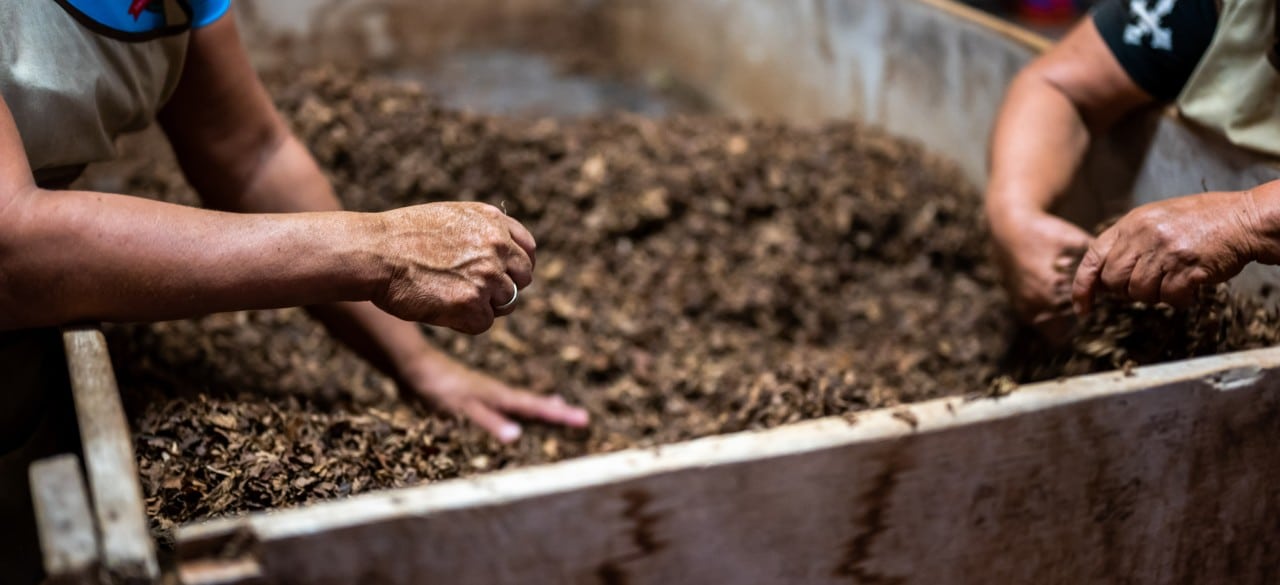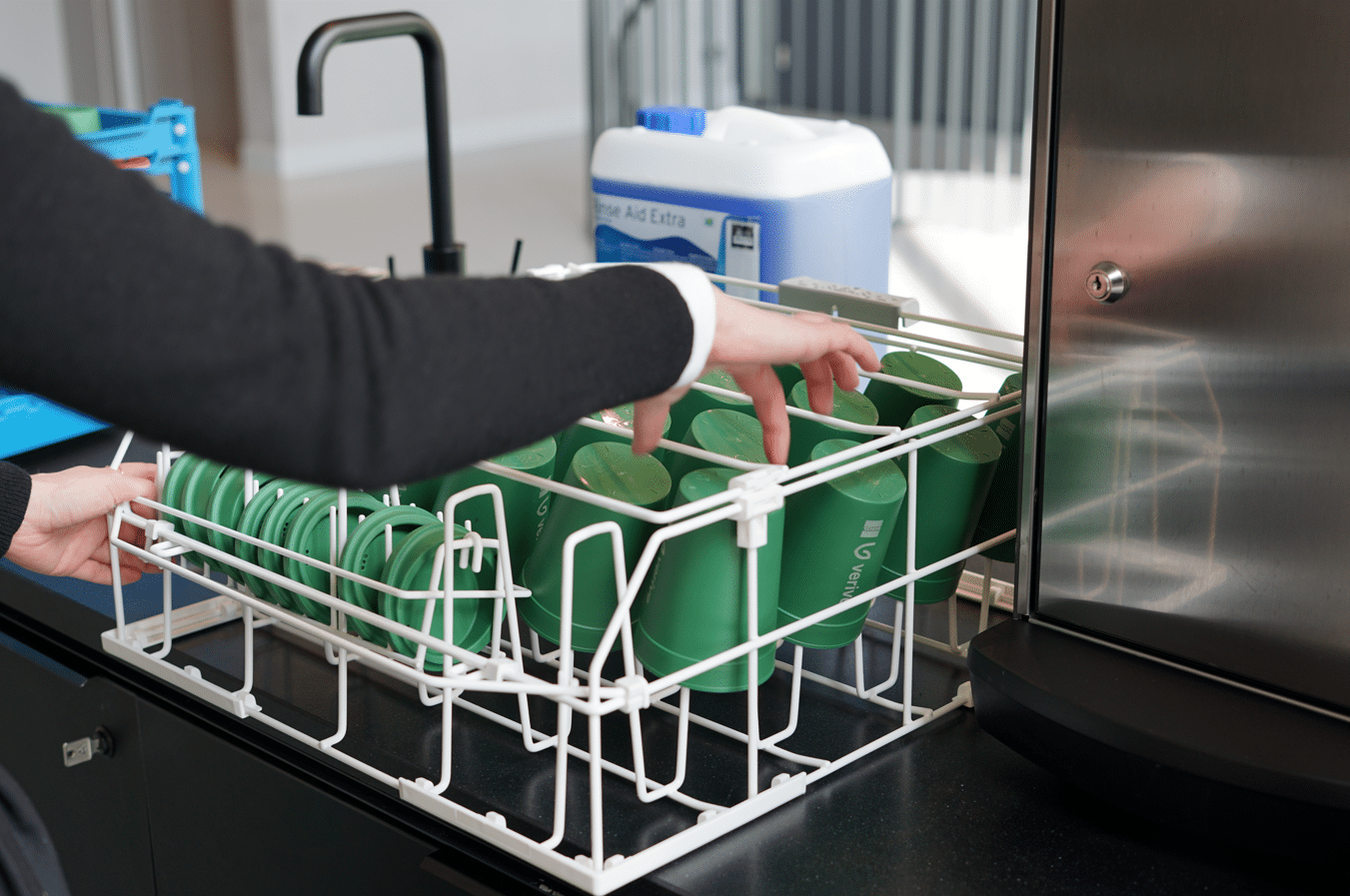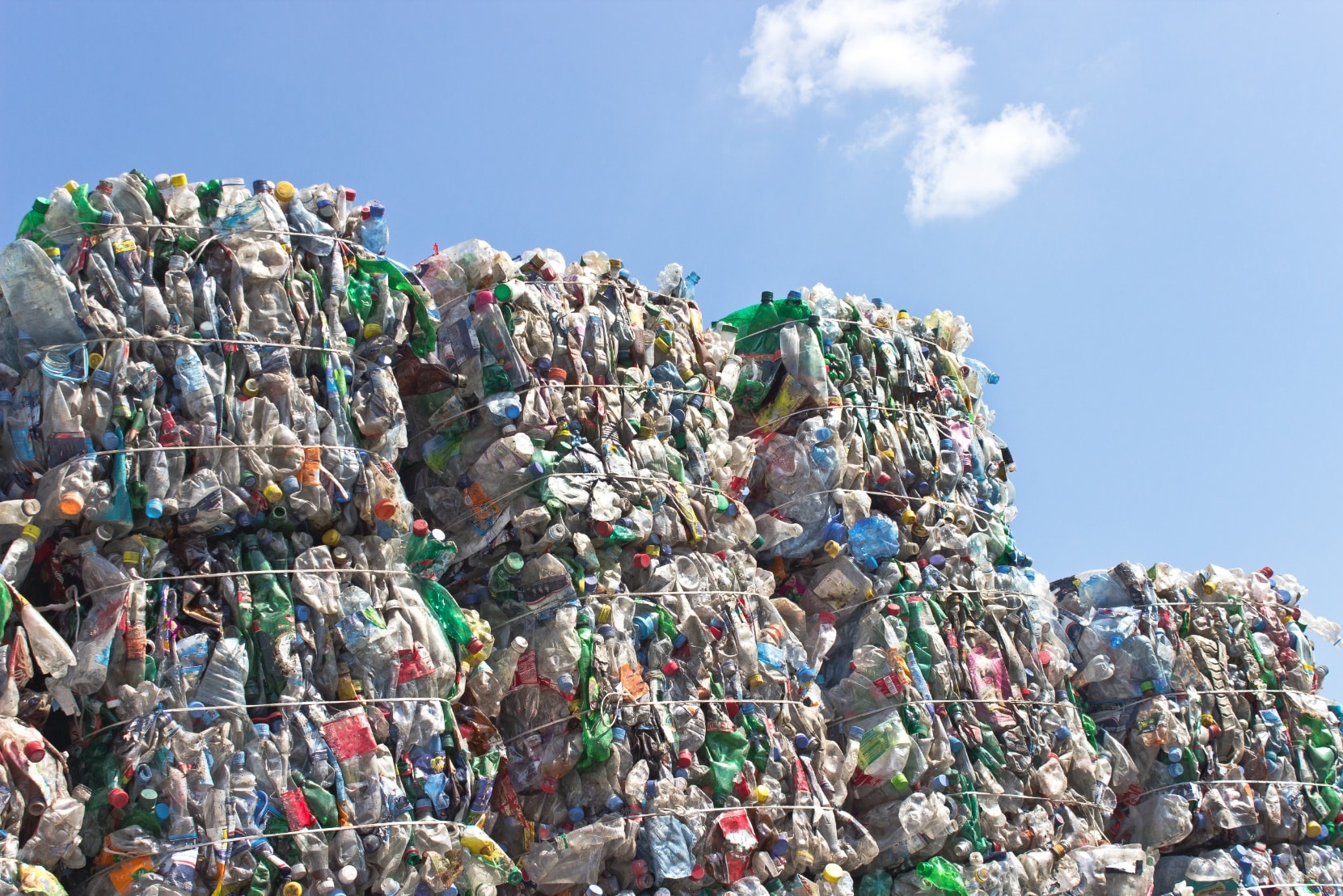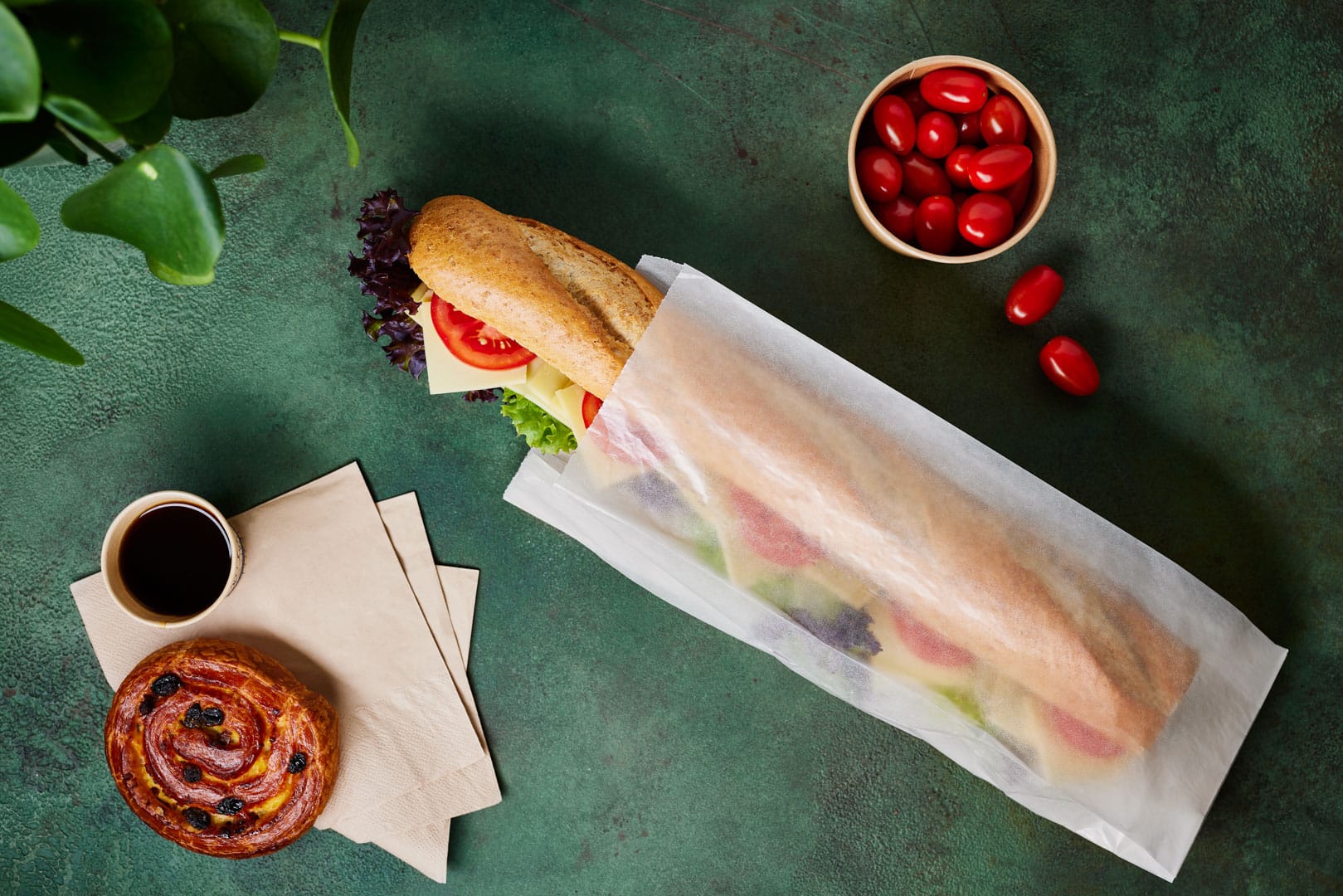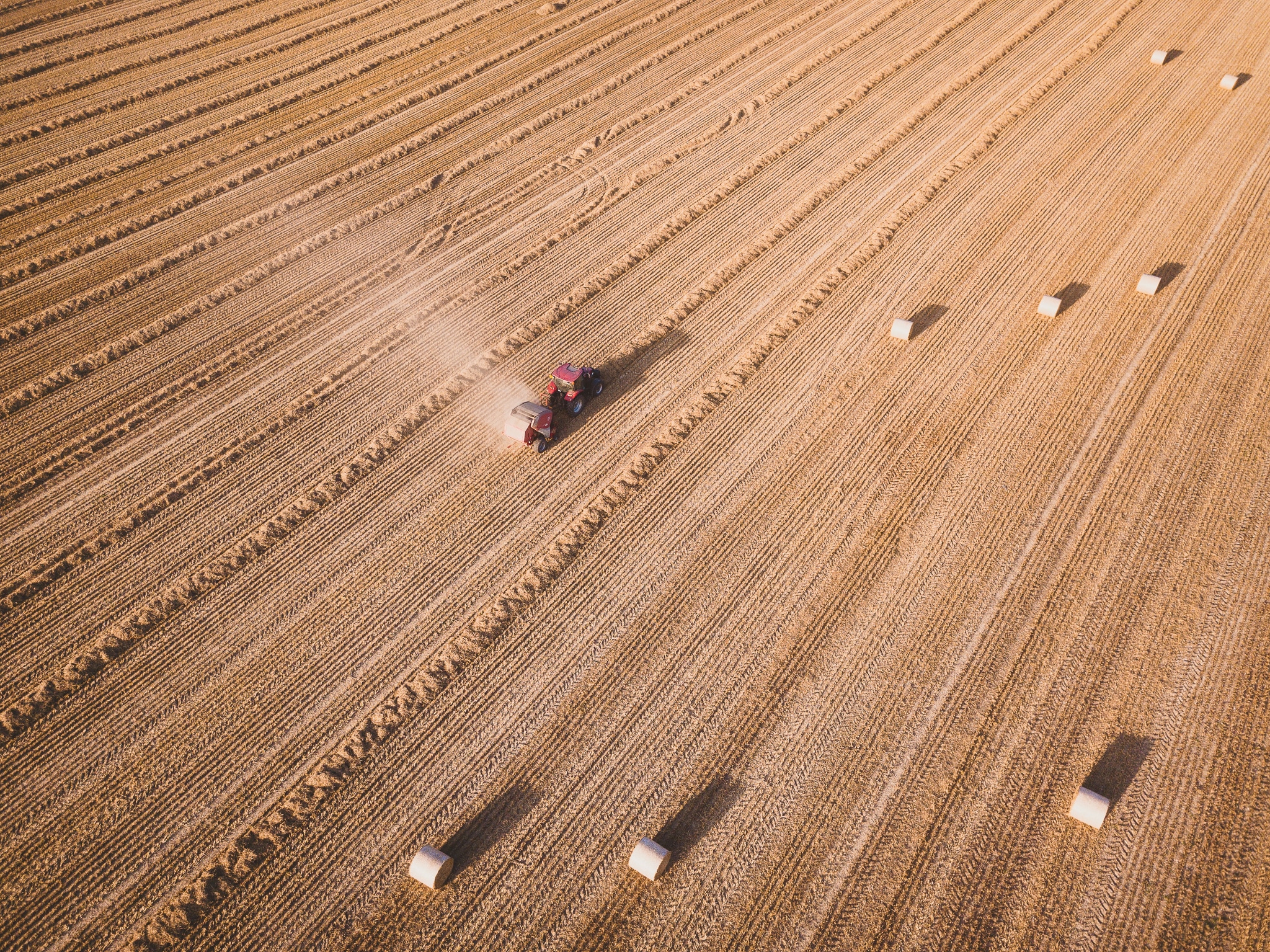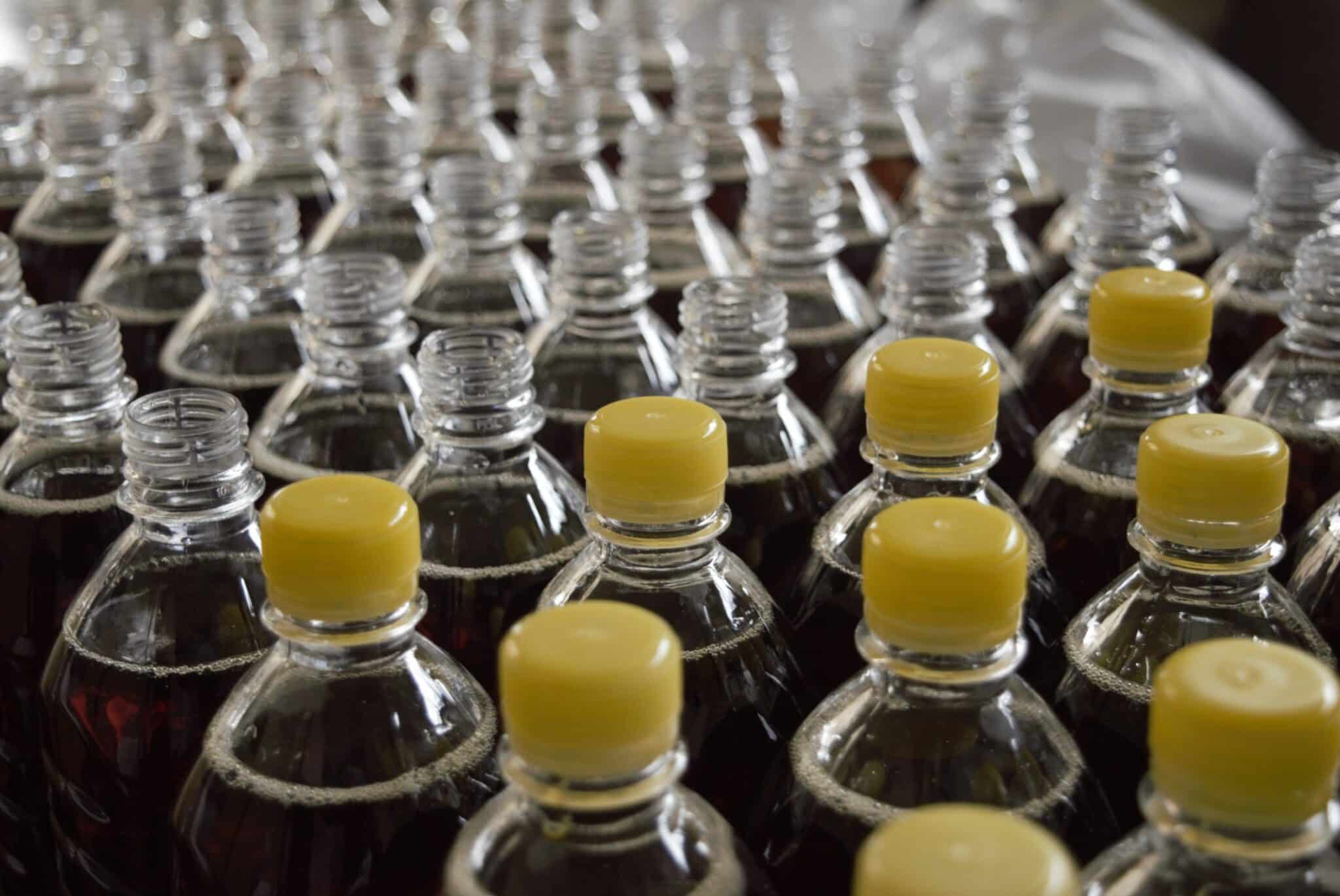About this article
What is compostable packaging? Where should I compost it? We answer your FAQs on all things compostable, including food packaging and tableware.
What is composting?
Most things that grow out of the ground, like vegetables and plants, can be composted.
Composting helps turn organic waste like food leftovers or leaf cuttings, into fertiliser to help grow new plants. In the hot composting conditions, microorganisms consume the proteins, fats and carbohydrates from the organic waste. These microorganisms excrete chemicals such as nitrogen, which act as nutrients that plants need to grow.
Some types of food packaging and tableware can be composted, as long as they meet strict specifications. However, these compostable products need to be sent to industrial composting facilities and not put in home compost bins. Unless of course they carry a specific 'home compostable' certification, such as TÜV Austria’s label.
To view our range of compostable products including plates, snack tubs, and takeaway boxes, visit our products.
Are there different types of composting?
One big difference in the world of composting is between home and industrial composting.
Home composting is what a lot of people are familiar with – composting that occurs in people’s gardens in home compost bins with relatively small amounts of garden or food waste. These require oxygen – meaning they work ‘aerobically’, and work at temperatures up to around 45˚C.
Industrial composting, meanwhile, occurs in industrial plants where high temperatures of around 50 – 65˚C or higher can be reached. These plants can handle certain materials that aren’t suitable for home compost, such as compostable packaging. That is because the organic waste is carefully monitored and treated with appropriate temperature, oxygen and moisture to accelerate degradation.
There’s also a subset of industrial composting facilities known as ‘anaerobic digestion’ facilities, which compost without oxygen. This process produces biogas which can be used as energy.

What makes a product ‘compostable’?
Ultimately it means that the product is made from parts that break down under specified conditions, and within a relevant timeframe. All components including printing inks and adhesives should break down into a mixture of decayed and decaying organic matter suitable for fertiliser.
There are standards that specify whether something is or is not compostable.
Any claims about whether a product is compostable, must be backed up by adhering to these standards. In Europe, EN13432:2000 for compostable packaging is the standard which certifies packaging will compost by industrial and commercial composting systems within a 12 week timeframe. In the Netherlands this is also known as NEN-EN 13432:2000.
TÜV AUSTRIA (formerly Vinçotte) is a certification body that awards Seedling, and OK Compost logos, to products that are in compliance with EN 13432.
Please note that ‘compostable’ should not be confused with ‘biodegradable’.
Will compostable packaging break down if littered?
No, it will not.
These products should not be littered and they are unlikely to break down in landfill either.
There is not currently a certification which states that a product can break down in nature without a specific set of environmental requirements. If anyone claims this, we would recommend that you don’t take this claim at face value.
How can I tell when a product is compostable?
A product must adhere to the standards laid out in a certification scheme.
EN13432:2000 for compostable packaging is a European standard that specifies the conditions that a product must meet in order to be considered industrially or commercially compostable. In particular, the standard specifies that at least 90% of the product must breakdown within 12 weeks, breakdown fully into organic substances within 6 months, and have no harmful effects on the quality of the compost.
If a Verive product shows the following seedling logo, then you can be assured it is compostable according to this specification:

Can I put compostable packaging into my home compost?
If packaging is certified as compostable, it should be sent to industrial composting facilities and not put into home composting. This way you can ensure that the food packaging or tableware meets the correct conditions to breakdown fully and not pose a threat to the environment.
Currently there’s no European-wide certification for home compostability of packaging. There are some national certification schemes, such as TÜV AUSTRIA and you should check in your own country to see if there is one. Alternatively, get in touch with our team of experts who will be able to find out for you.
Can all biodegradable packaging be composted?
No, it cannot.
Just because packaging is biodegradable does not mean it is suitable to be sent to composting facilities.
Only packaging that is certified as compostable should be sent to composting facilities.
Biodegradable means that a product is capable of being broken down over time by bacteria or other living organisms. What it doesn’t tell us is how long this will take, what it will break down into, or the conditions it needs to decompose. Therefore there is no telling what something labelled as 'biodegradable' will break down into or how long it will take. We believe the term biodegradable is misleading and in some cases its pure greenwashing and therefore we commit to not using the term to describe our products.
Compostable products on the other hand fit requirements that specify these types of conditions such as length of time and end result. Furthermore, there are named certifications attached to the term, so you can be sure that your food packaging and tableware is fully compostable.
What’s the difference between biodegradable and compostable?
There are lots of different types of biodegradable grades and biodegradable does not necessarily mean it’s good for the environment. All it means is the material will eventually biodegrade, but it doesn’t specify how long that will take, what conditions it takes to do so, or what will be left over afterwards. This is the main reason that we pledge not to use the term 'biodegradable' when describing our food packaging and tableware products.
Instead we provide compostable packaging. The term ‘compostable’ means the material can actually break down in a reasonable period of time without leaving a harmful residue behind.
What are the different composting certifications?
There are a range of certifications for compostability. If the product can be certified as compostable, it must meet the conditions set out in one of these.
EN 13432 : 2000 for packaging
A European standard certifying packaging that composts by industrial, commercial composting systems, within a twelve-week timeframe. This standard comes under the European Directive on Packaging and Packaging Waste (94/62/EC), which has been translated and implemented across all member states. Find out more about EN 13432 here.
EN 14995 : 2006 for non-packaging
This standard is similar to the EN13432:2000 above but is made to include plastics for non-packaging applications, such as aprons or gloves.
PAS100 – for compost
This publicly available specification (BSI PAS 100) is a specification that indicates a quality standard for compost in the UK. It includes requirements about how materials such as green and green-food waste can be processed, and is used by the UK’s Compost Certification Scheme.
ASTM D 6400
Covers plastics and products made from plastics that are designed to be composted in municipal and industrial composting facilities. This is a standard of the American Society for Testing and Materials (ASTM) which is an international standards organisation. This serves a similar function to the EN 13432, but covers other non-packaging products, and is used in the US by federal, state and municipal government regulations. Biodegradable Products Institute is an independent certification program for products that meet all the requirements of the ASTM D 6400 standard.
How many industrial composting facilities are there in the Netherlands?
There are 21facilities in the Netherlands that treat source separated municipal organic waste (GFT, or Groente, Fruit and Tuin = Vegetables, Fruit and Garden). These facilities convert this organic waste into compost.
How many industrial composting facilities are there in Europe?
Across the EU, around 47.5 million tons of bio-waste is treated across 4,724 plants every year, according to the European Compost Network. Out of this total, 3,403 are composting facilities, 738 are anaerobic digestion facilities, and 133 are a combination of both.
Where does the bio-waste get used once it’s been composted in industrial facilities?
Bio-waste treatment products are used mainly in agriculture. It varies by country but a large use is in cereal production, as well as vineyards and vegetable crops.
Can organic waste suitable for home compost be industrially composted?
Yes, it is possible that home waste usually put in garden compost bins can be composted in industrial facilities.
However, it is not possible the other way round. If something is only suitable for industrial compost, it will not break down sufficiently in your home compost. This is because home composting bins can’t normally achieve the necessary conditions, for instance high temperature or sufficient UV light.
If you have any other questions regarding composting or the compostability of your food packaging and tableware then get in touch with us today. Alternatively check out our range of products, including a range of certified compostable items here.
